#Ollantaytambo Ruins
Explore tagged Tumblr posts
Text

Terraces of Pumatallis, Peru: The valleys of the Urubamba and Patakancha Rivers along Ollantaytambo are covered by an extensive set of agricultural terraces or andenes which start at the bottom of the valleys and climb up the surrounding hills. The andenes permitted farming on otherwise unusable terrain; they also allowed the Incas to take advantage of the different ecological zones created by variations in altitude. Terraces at Ollantaytambo were built to a higher standard than common Inca agricultural terraces; for instance, they have higher walls made of cut stones instead of rough fieldstones. This type of high-prestige terracing is also found in other Inca royal estates such as Chinchero, Pisaq, and Yucay. Wikipedia
#Terraces of Pumatallis#Ollantaytambo Ruins#Cusco#Cusco region#Province of Urubamba#Peru#south america#south american continent
140 notes
·
View notes
Text
Discover the Cultural Treasures of the Sacred Valley with 69Explorer

The Sacred Valley of the Incas, nestled in the heart of Peru, is a destination that mesmerizes visitors with its breathtaking landscapes and rich cultural heritage. If you’re planning a trip to Peru, a Sacred Valley tour is a must to truly immerse yourself in the history and beauty of the Andean region. At 69Explorer, we offer an unforgettable journey through this ancient valley, where you’ll explore the magnificent ruins, charming villages, and stunning natural beauty that have made it one of the most sought-after travel destinations in South America.
The Sacred Valley, or "Vilcanota Valley," was once the heart of the Inca Empire, and it remains a treasure trove of archaeological sites, each with a unique story to tell. Our Sacred Valley tour takes you to some of the most iconic Incan sites, including the impressive fortress of Ollantaytambo, the agricultural terraces of Moray, and the colorful market town of Pisac. Each stop offers an opportunity to delve into the fascinating history of the Inca civilization, with expert guides from 69Explorer sharing in-depth knowledge about the culture, customs, and legacy of this ancient civilization.
Ollantaytambo, with its towering stone terraces and sacred temples, is one of the highlights of the tour. It’s not just a site of historical significance but also an excellent example of Incan engineering. The town’s layout itself is a marvel, with narrow cobblestone streets and buildings that date back to Inca times. Our guides will take you on a journey through the past, explaining the site’s role in the empire and the stories of resistance against Spanish conquest.
Another highlight of our Sacred Valley tour is the mysterious circular terraces of Moray. These concentric rings, believed to have been used for agricultural experimentation, show the advanced techniques the Incas used in crop production. The valley's fertile soil, coupled with the Inca’s sophisticated irrigation systems, made it the perfect place to grow a variety of crops at different altitudes, something that our guides will explain in detail during your visit.
Pisac, with its bustling market and panoramic views of the valley, is another stop on the Sacred Valley tour with 69Explorer. Here, you can shop for traditional Andean handicrafts, from colorful textiles to intricate jewelry, and interact with local artisans. The Pisac ruins also offer an insight into Incan history, with terraces and a ceremonial center that overlook the valley below.
Throughout your journey, 69Explorer ensures that you have a comfortable, enriching experience. We provide knowledgeable guides, seamless transportation, and well-planned itineraries, so you can focus on exploring and soaking in the magic of the Sacred Valley. Whether you’re a history buff, a culture enthusiast, or simply someone who loves stunning landscapes, this tour is an experience not to be missed.
Embark on an adventure with 69Explorer and discover the hidden gems of the Sacred Valley. Book your Sacred Valley tour with us today and let us take you on a journey through one of the most fascinating regions of Peru.
#Sacred Valley tour#Sacred Valley Peru#Inca ruins#69Explorer#Ollantaytambo#Pisac#Moray#Sacred Valley of the Incas#Sacred Valley tours#cultural tours Peru
0 notes
Text

Ollantaytambo, Peru: Ollantaytambo is a village in the Sacred Valley of south Peru, set on the Urubamba River amid snow-capped mountains. It's known for the Ollantaytambo ruins, a massive Inca fortress with large stone terraces on a hillside. Major sites within the complex include the huge Sun Temple and the Princess Baths fountain. The village's old town is an Inca-era grid of cobblestoned streets and adobe. Wikipedia
#Ollantaytambo#Ollantaytambo District#Urubamba Province#Department of Cuzco#Peru#South America#South American Continent
143 notes
·
View notes
Text


From the journals of Florence Spectre,
Notes 2: The Dig Crew
This post will be updated as Florence learns more about the citizens of Ollantaytambo. Keep an eye on it!
[ Transcript:
Left page The Dig Crew Marcos Rosales: Not very bright Pedro Gallego: Doesn't talk? Sweetheart Marcos Rosales & Pedro Gallego: Hired hands
Right page Rodrigo Sanchez: Discovered ruins. Dig leader Rodrigo Sanchez -> Adela Sanchez: Hermana [Sister] Adela Sanchez: Creepy Article: HERE Rodrigo Sanchez: Thief!! ]
Playing with SeveralPerson’s Ultimate Decades Challenge Rules
Started: 1800s
Current decade: 1910s
Family tree
Spreadsheet
CC Finds
#ts4 ultimate decades challenge#ts4 decades challenge#sims 4 ultimate decades challenge#sims 4 decades challenge#decades challenge#ultimate decades challenge#spectre legacy#npcs#npc intros#intros#marcos rosales#rodrigo sanchez#pedro gallego#adela sanchez#ts4 historical#sims 4 historical#1910s#esoteric sims
15 notes
·
View notes
Video
Machu Picchu Train Service por Joe McMillan Por Flickr: PeruRail operates a number of narrow gauge trains and motorcars to transport tourists to and from the Machu Picchu ruins above Aguas Calientes, Peru. These trains used to originate at Cusco, but it was found that the train ride was taking up too much of the day and not allowing visitors enough time at the ruins. To rectify the problem, buses started ferrying tourists from Cusco to Ollantaytambo to board the trains, leaving only one daily train that departed directly from Cusco. There are no roads beyond Ollantaytambo, so taking a train is the only option. On July 31, 2008, motorcars 217 and 216 at Aguas Calientes join up to compose a train. At the time of our visit, there was quite a variety of trains and motorcars in the Machu Picchu service. Photo by Joe McMillan.
7 notes
·
View notes
Photo

Harnessing Mountain Water Towers: Mail from Machu Picchu
Dear AGU,
The first thing that impresses those who trek up to the ruins of Machu Picchu – other than the spectacularly biodiverse transition landscape between the Peruvian Andes and the Amazon Basin – is that you are not really on top of the world. Machu Picchu (Old Mountain, in Quechua), located at ~3,000 m above mean sea level, is itself surrounded by towering mountains that rise to ~4,000 above msl. Over 600 years ago, the Inca harnessed natural springs originating at higher elevations to supply water to their homes and irrigate their terraced fields here in this mountain-top sanctuary. In these images from July 2024, one can see evidence of canals crisscrossing the ruins that eventually drain to the Urubamba River in the Sacred Valley below. Evidence of active aqueducts, fountains and irrigation canals can be also seen in the nearby Inca villages that have been continuously inhabited over the past several centuries. One good example of such indigenous hydroengineering lies in the village of Ollantaytambo that has water derived from Andean glaciers perennially running through it.
World over, people have utilized mountain water towers as a source of water for millenia taking advantage of the power of the water cycle to raise water, the capacity of mountains to store it, and force of gravity to release it – maintaining fertile landscapes of running fresh water. The Romans and Moors have left lasting legacies of their extensive network of aqueducts and canals throughout the Mediterranean – some of which are still functional.
Today, roughly half of humanity depends on water derived from rapidly dwindling mountain water towers – many of them still glaciated or periglaciated. With anthropogenic land-use changes in mountain habitats altering their capacity to hold and release water, and ongoing global warming accelerating glacial mass loss, water security will get precarious over time. The world’s mountain water towers need immediate protection from the multi-pronged threats eroding their unique water-holding capacity.
— Bopi Biddanda, Annis Water Resources Institute, Grand Valley State University, Muskegon, Mich. (www.gvsu.edu/wri/)
2 notes
·
View notes
Text
Machu Picchu: A Day Trip to Remember 🇵🇪 🤓 Ever wondered how people reach the fabled landmark of Machu Picchu? You don’t have to trek for days to reach it (though that *is* one rad option). I took an unforgettable *day trip* last fall. Details below! 💫 🚞 I traveled on a bimodal tour with Peru Rail, which included a bus ride between Cusco and the quaint town of Ollantaytambo, then a scenic train journey through the Sacred Valley. The Vistadome class was definitely worth the higher ticket price, with of rushing rivers, Quechua ruins, lush forests, and exotic wildlife visible through both the side *and* ceiling windows. 🌿 Once we arrived at Machupicchu Pueblo, my small group was greeted by an amazing local guide who led us on a knowledge-packed tour of the ancient citadel. 📜 I was amazed to learn that this iconic site was built around 1450—and is still 70% intact! 🥹 It was a legitimately humbling experience to walk through the ancient temples, agricultural zones, and protective walls that once housed an estimated 500 people. The history, lore, and surroundings left me in awe. If you're ever in Cusco, I highly recommend taking *at least* a day trip to this iconic landmark. It's an adventure you'll never forget! 🙌
2 notes
·
View notes
Text
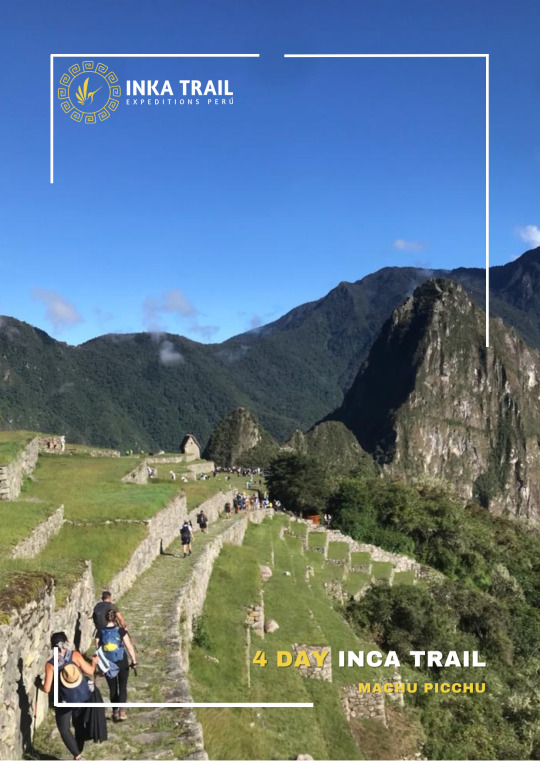

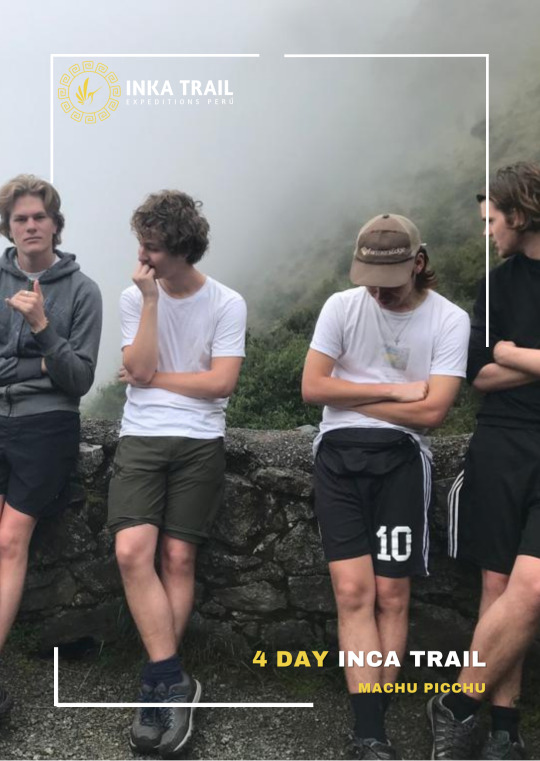
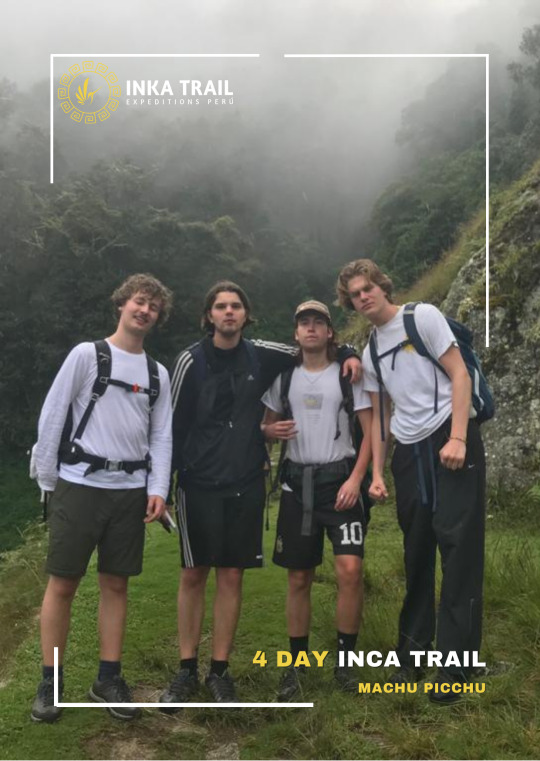
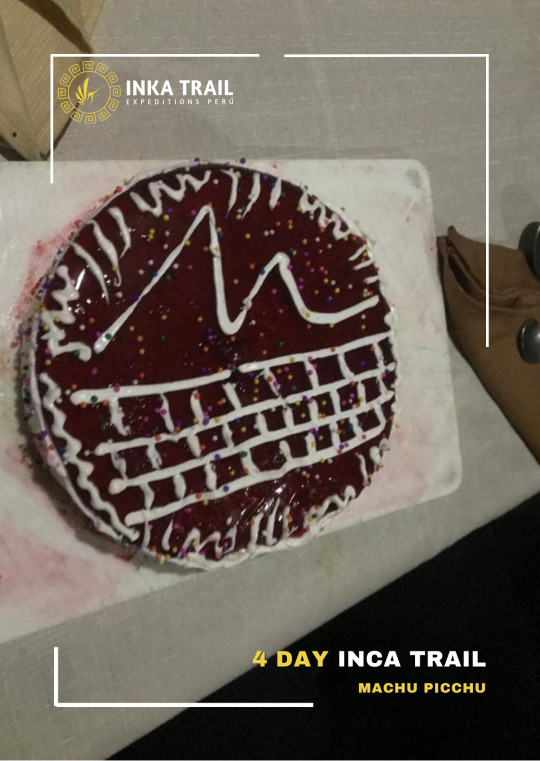
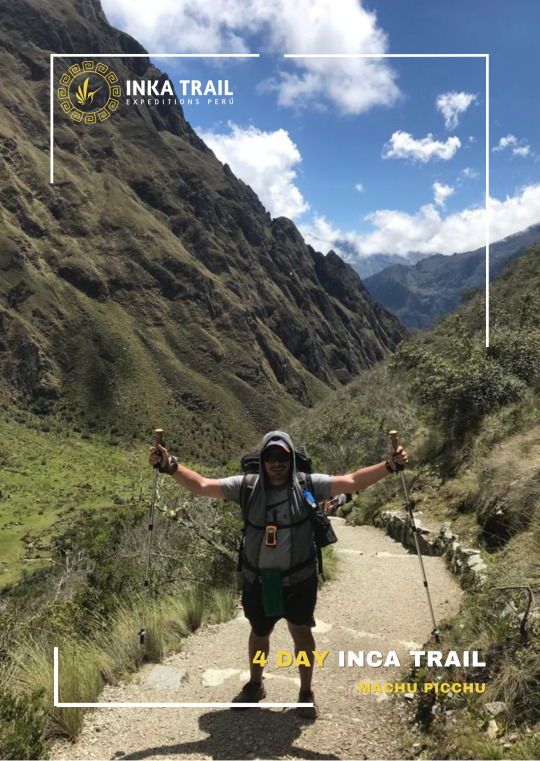
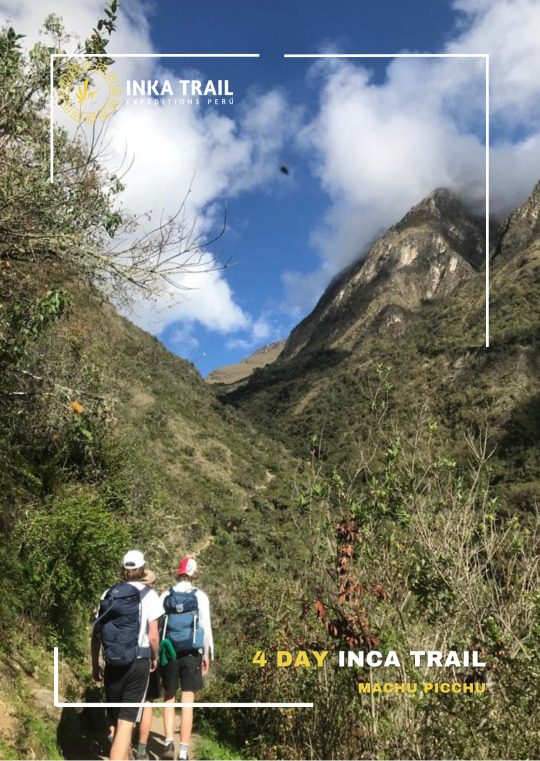

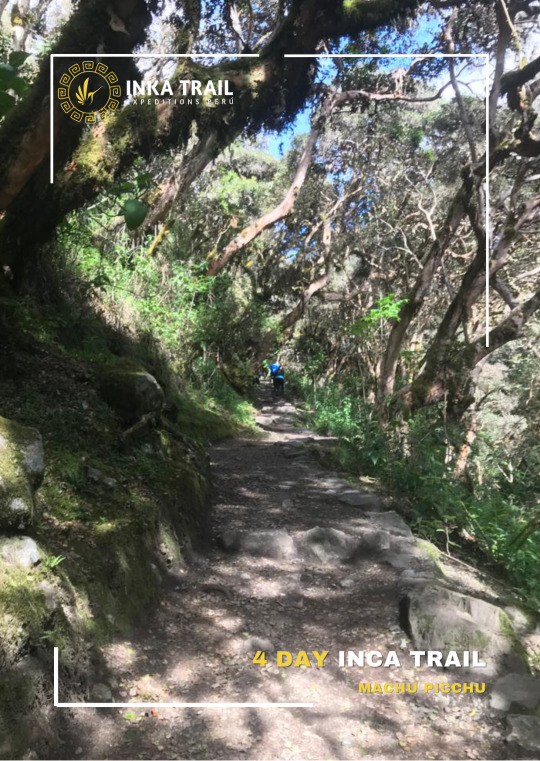
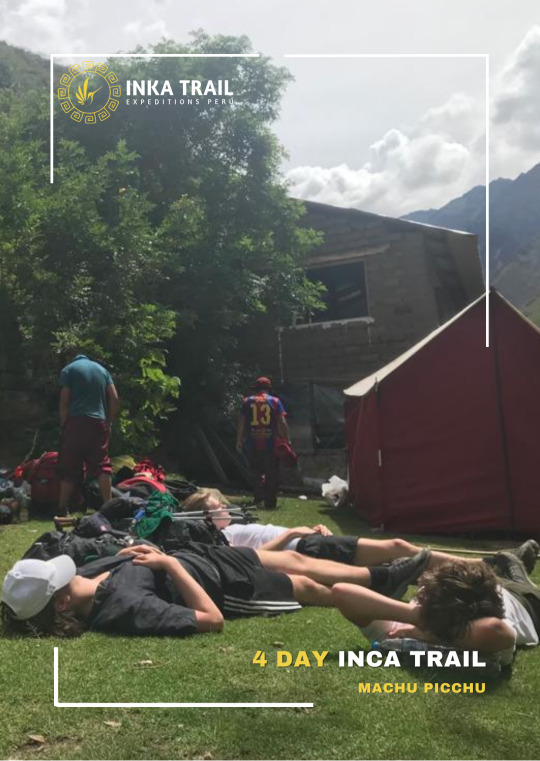
Tour: 4 day Inca Trail to Machu Picchu
Guide: Franco Guillen Sanchez
The Classic Inca Trail to Machu Picchu 4 days route is along hand-hewn stone stairs and trails through sumptuous mountain scenery and amazing cloud forest, past rushing rivers and dozens of Inca ruins. The zone is inhabited by rare orchids, 419 species of birds, and even the indigenous spectacled bear. The trek begins at Qorihuayrachina near Ollantaytambo- more easily described as Km 88 of the railway from Cusco to Aguas Calientes. The 43 km (26-mile) route passes three formidable mountain passes, including the punishing "Dead Woman's Pass", to a maximum altitude of 4,200m (13,800 ft.). Most groups enter the ruins of Machu Picchu at sunrise on the fourth day, although others, whose members are less keen on rising at 3:30am to do it, trickle in throughout the morning.
More info:
+51 970 506 205
#inkatrail#incatrail#machupicchu#trekkinglovers#hikers#hike#adventure#trek#trekking#trekkinglife#hikingadventures#hiking#hikingtrails#adventuretime#hikerlife#sungate#travel#tour2024#4dayincatrail#4daytrek#4dayhike#incatrail2024#travel2024
2 notes
·
View notes
Text
One step beyond!
The fact that you're reading this means that MM and I made it back to Cusco safely. But how did we get on? Did we manage to scale the mountain and achieve MM's long held ambition?
The day started well. Despite MM waking me up at 2.00am to get ready for our pick up at 3.50am our "breakfast box" was ready and our driver turned up bang on time and the guide, Vincenti, was with him. Result! No chance of being left stranded at Km104. We set off to pick up the other members of our group, Sandra, a very fit 49 year old German CFO working out of Singapore and Alexa a very fit 33 year old HR German senior management training executive. They had all the best trekking gear and really looked the part. I suddenly felt my age and slightly intimidated. All 3 women, including MM, walked and trekked regularly as their chosen passtime, I had done an 8 mile practice walk 4 weeks ago. This could only end badly.
After 1.5hrs we reached Ollantaytambo train station and boarded the train to Km104 where we got off at 7.45am and the train pulled off and left us. The point of no return. We crossed the tracks and from that point it was climb, climb, climb! The big mistake I had made was that it's not walking practice you need for this trek it's stepping practice. As I walk 5-6 miles 3-4 times a week playing golf (it would be less if I could hit the ball straight!) I thought that my fitness levels would be okay. The walk would be tough but achievable. I kid you not after 30m I was sweating like a pig and had already removed my fleece and shirt. I was breathing really hard. It was either the altitude or my fitness or both. I knew then that I was in for a battle and a challenge and might have to dig deep.
The difficulty is that much of the climb is steps, not just normal steps but steps of 12-15 inches. There are some non-step phases where you can catch your breath but they are few and far between. Also with the 2 young, fit German women striding on it was difficult to go at your own pace. They were very good, but pride kicks in doesn't it, even when you're older and should know better.
Those of you that know me pretty well know that I sweat like a Barron ie it pours off me without me exerting much effort. Needless to say I was dripping from the start to the end of the day. The 2 women and Vincenti must have thought I was a goner!
After 4hrs of almost non-stop climbing we reached Winaywayna, an Inca ruin, where we stopped for lunch. I was so grateful. I thought, thank God, I can have a half hour break, the worst is done and the next bit should be more manageable with the final bit being downhill. To be fair, it was more manageable, but there were still some tough bursts of climbing culminating in the "monkey climb" up to the Sun Gate. I got to the top before MM, who, until that point had been coping better than me, but didn't go through the gate until she caught up and we could go through together. It's spectacular. It's the first sighting of Machu Picchu and suddenly all the pain and discomfort disappears as you drink in the view. Furthermore, you realise that the final hour will be downhill with no climbs!
Hmmm, wrong again. It is downhill, but there are still uphill sections and the downhill steps are still 12-15 inches deep so not so easy. Plus, we had a shower during the descent which made the stones very slippy indeed. Most people seemed to manage okay by taking it easy but I managed to slip onto my backside on about 4 occasions despite using walking poles (I would recommend) - somewhat embarrassing but also very dangerous. For most of the walk you are walking on a track/steps of maybe 4 to 5 feet wide with a precipitous drop into the abyss to the right hand side. As you know, I suffer from vertigo and don't like heights at all so I concentrated on looking at the ground to place my feet and out into the distance for views. Amazingly, after a while it didn't bother me too much as I was concentrating on catching my breath! If I'd fallen the wrong way on a couple of those slips it could have been very nasty.
At 3.15pm we reached Machu Picchu. We were absolutely knackered but delighted to have made it, particularly as the guide said it was a pretty good time. The view is spectacular as you'll see in the photos.
We took the bus down the mountain to our hotel in Aguas Calientes where we showered before going out for a group meal. I went out like a light that night and slept like a log - it was great.
This morning we woke up with no aches or pains and went back up the mountain to tour the actual site and learn some of the history of the Inca's and Machu Picchu in particular. It was fascinating. The construction methods, the relationship with the Spanish and how Machu Picchu was found and developed by an American academic, Mr Bingham, in 1911. Everything was going well until MM upset the Llama's that are used as lawnmowers to keep the grass short and they attacked her by trying to eat her hat!
It has been an amazing adventure and MM has realised her dream of climbing up to Machu Picchu. I have to admit that my original view that "it's just a load of old stones at the top of a steep hill" may well have slightly undersold this Unesco World Heritage site. If you're in the area it's worth a visit, but I would suggest doing it whilst you're still pretty fit and to practice by walking up and down stairs (2 at a time preferably). Think very carefully and fully understand the difficulty of the 4 day walk instead of the one day walk before being tempted. Overall though, I'd recommend it, a great sense of achievement and some incredible views.
So was it One Step Beyond (Madness)? - Nearly!
2 notes
·
View notes
Text
Discovering the Marvels of Peru & Iguazu Falls: A Journey of Natural Wonders
A memorable travel experience is created by the fusion of the magnificence of nature and the cultural diversity found on a Peru & Iguazu Falls Tour, which is like entering a fantasy world. This expedition guarantees a tapestry of stunning natural scenery, lively cultural traditions, and spellbinding waterfalls.
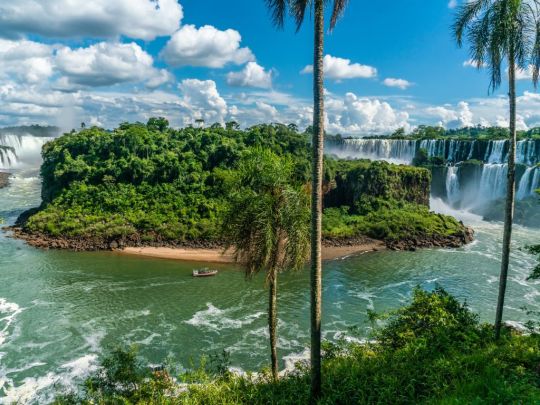
Peru: A Land of Ancient Mysteries
The adventure starts in Peru, a nation rich in history and the location of one of the most famous archaeological wonders in the world, Machu Picchu. This ancient Incan citadel is a UNESCO World Heritage Site and an architectural marvel that continues to confound researchers and tourists alike. It is located high in the Andes Mountains.
A pilgrimage for both history buffs and explorers is visiting Machu Picchu. An exciting approach to the site is provided by the Inca Trail, a well-known hiking path that winds through lush rainforests and high-altitude vistas before revealing the magnificent ruins. A truly magical experience can be had while watching the sunrise over Machu Picchu's terraces and thinking about its mysterious past.
But Machu Picchu is not everything about Peru. The Sacred Valley encourages you to learn more about Incan civilization with its lovely communities and archaeological sites. Explore the Pisac Market, a bustling display of native crafts and traditions, or visit Ollantaytambo, a living Incan town with well-preserved architecture.
Iguazu Falls: Nature's Symphony of Water
The tour brings you to Iguazu Falls, a natural wonder that defies description, after immersing you in Peru's rich cultural heritage. These breathtaking falls, which lie on the border of Argentina and Brazil, are a testament to the unbridled beauty and force of nature.
Iguazu Falls is a massive collection of waterfalls that spans about two miles and has over 275 distinct cascades. The largest of the falls, Devil's Throat, has thundering waters, and viewing it will leave you in awe of the Earth's natural forces. Wildlife is abundant in the dense rainforest that surrounds the falls, creating a calming setting for this spectacular natural phenomenon.
Iguazu Falls exploration is a journey unto itself. Take a stroll along well-kept pathways that provide panoramic fall views from all directions. Take an exciting boat trip to go up close to the falls, where you can feel the mist on your face and hear the roar of the gushing water. The opportunity to see toucans, monkeys, and vibrant butterflies makes the rainforest a haven for birdwatchers and wildlife aficionados.
A Tapestry of Experiences
The journey between the two destinations is what makes the Iguazu Tour Packages so interesting. Enjoy traditional Peruvian food along the route, which combines a variety of tastes and ingredients with influences from indigenous, Spanish, and Asian cultures. Enjoy Argentine barbeque and discover the distinctive flavor combinations of local cuisine while visiting Iguazu.
This tour weaves history, culture, and nature together in a way that is both enlightening and breathtaking. Each experience serves as a reminder of the limitless beauty and wonder that our globe has to offer, whether you're standing above the Iguazu Falls or touring ancient ruins in Peru. A once-in-a-lifetime trip where each step unveils a fresh layer of the remarkable is promised by the Peru & Iguazu Falls Tour.
#love on tour#travel blog#travel#places to visit#holiday#travel guide#tours and travels#vacation#peru
2 notes
·
View notes
Text
The Sacred Valley
Impulsive like me, Irene booked a last minute trip to come visit me in Cusco. Only a few days before she left, Jonathan decided to tag along as well. They arrived on Thursday morning and I met up with them briefly before their walking tour.
We connected again for a romantic dinner at Rucula where we sat and chatted for hours. It was so nice to have them in town! For dessert, we met up with Garrett at Qucharitas to split some peculiar nitrogen ice cream flavors along with picarones which is a type of donut made with sweet potato, squash, and star anise. That makes it healthy right?
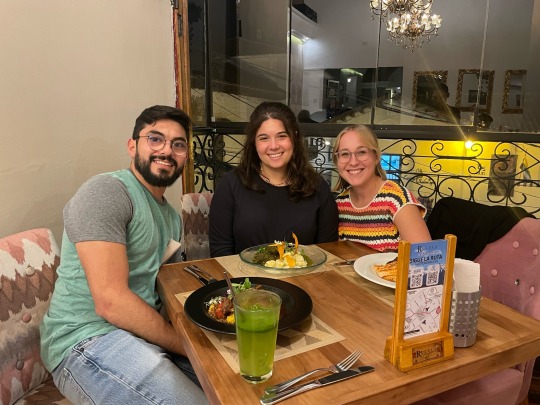
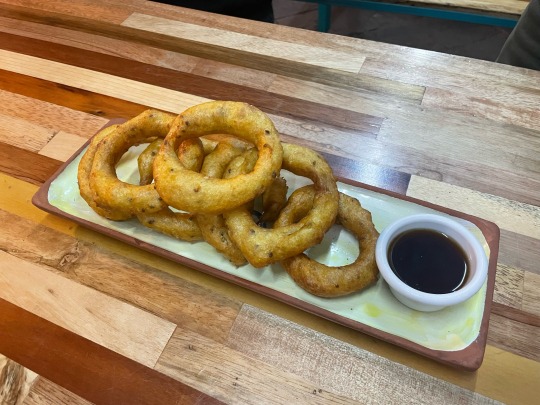
On Friday morning I actually had a lot of work to do, but I finally managed to make it out to a not so quick lunch with Irene. Later, a bunch of the tribers met up at the San Blas Market to start off our cooking class. Our chef gave us a tour, which was needed due to the sheer size of the market and the variety of its offerings.
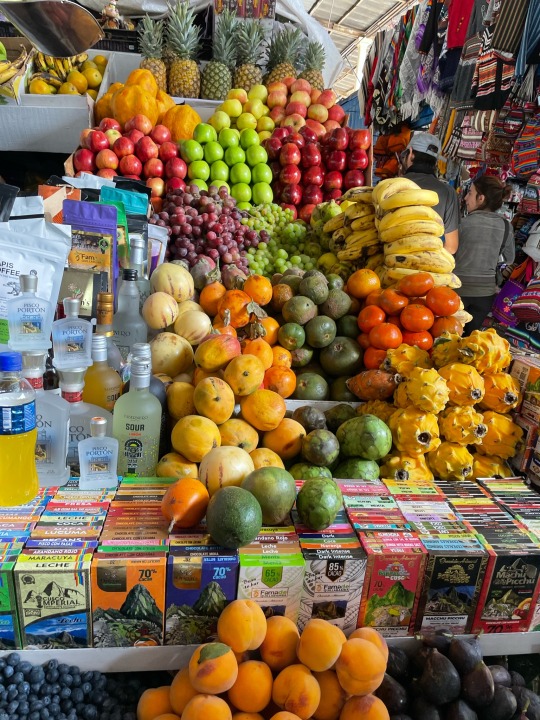
Once we got to the kitchen, we made maracuyá sours - cocktails with ice, pisco, passionfruit, eggwhites, and simple syryp. For the appetizer we assembled a Japanese-influenced ceviche and for the main course we made quinoa-encrusted oyster mushrooms/alpaca. With all the jokes back and forth, we never thought we would make it out of there to catch our bus to the Sacred Valley. We actually had to skip dessert!
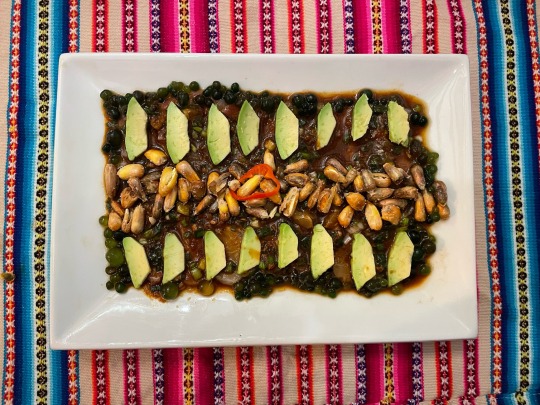
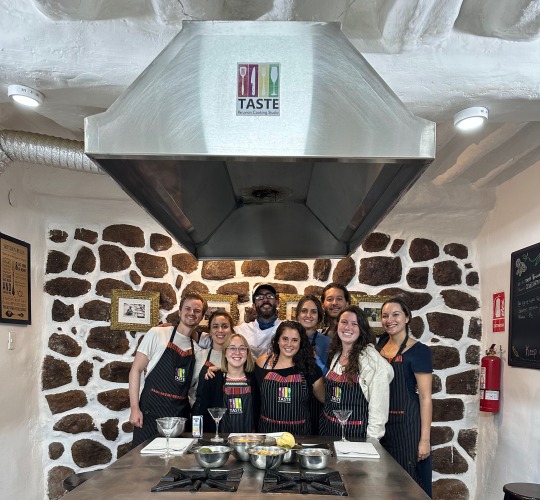
The majority of the group rented a lavish house together in the Sacred Valley. In the morning, chefs made a nice breakfast spread before we got ready to get on our tour bus. Due to a series of miscommunications and unfortunate circumstances, the bus was an hour late so some of us took a stroll around the town of Urquillos. The town appeared to be run by stray dogs although there was soon to be a mayoral race which was split on the important issues - corn vs. cows.
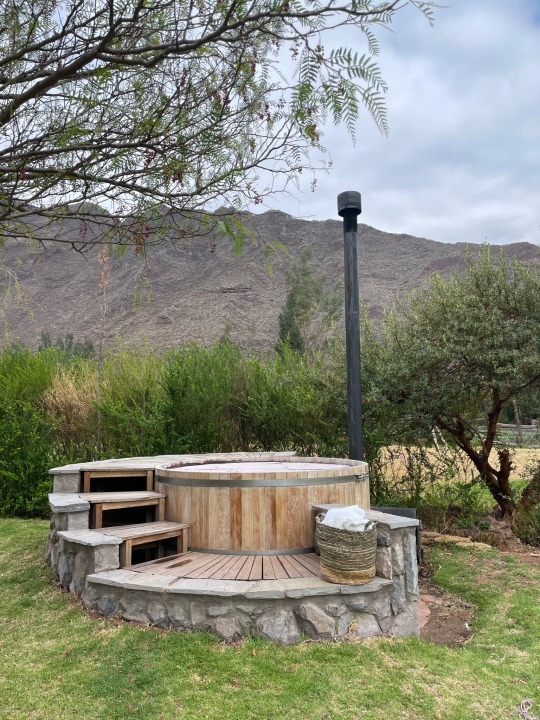
Our first adventure for the day was an ATV tour to Moray which is a terraced architectural Inca site. Along the way, we got a great view of the landscape and saw a variety of livestock. Next, we climbed to the top of the Ollantaytambo ruins which signifies the beginning of the Inca Trail to Machu Picchu.
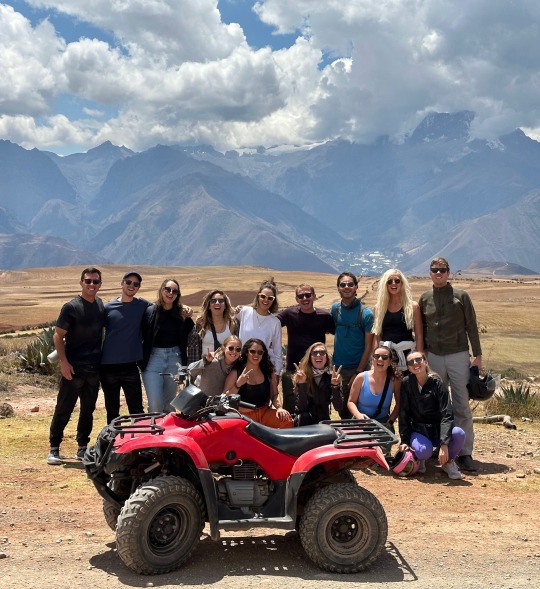
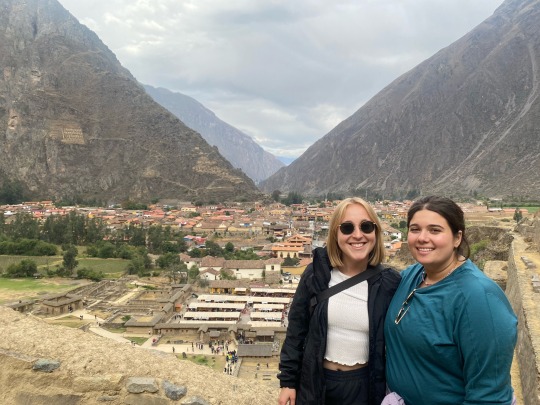
The last stop of the trip was the Maras Salt Mines which are composed of over 5,000 pools and were established over 500 years ago. Back at the house, chefs cooked us dinner and we started heating the wood-fired hot tub. We spent the majority of the night in the tub, which we squeezed 10 of us into! The night ended with s'mores around the fire pit.
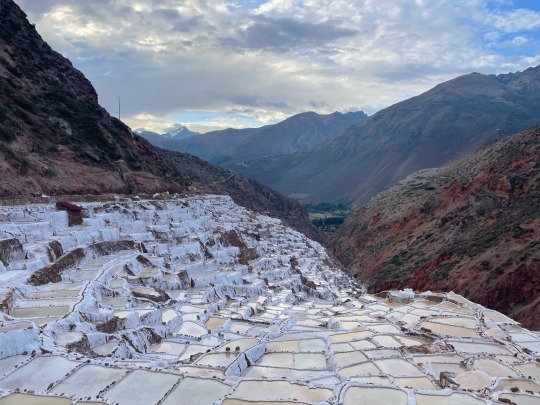
Sunday was spent at Mountain Views Maras which is a glamping spot with, as expected, expansive mountain views, a nice restaurant, and alpacas, llamas, and horses. All afternoon, we fed the animals with corn husks and did photoshoots. It was so special being able to be in such close proximity to these big animals for a prolonged period of time.

On our way back home we stopped at a textile place where they gave us a demo on how the yarn is made and dyed.
4 notes
·
View notes
Text

Pinkuylluna, Inca storehouses, Ollantaytambo, Peru: The Incas built several storehouses or qullqas out of fieldstones on the hills surrounding Ollantaytambo. Their location at high altitudes, where more wind and lower temperatures occur, defended their contents against decay. To enhance this effect, the Ollantaytambo qullqas feature ventilation systems. They are thought to have been used to store the production of the agricultural terraces built around the site. Grain would be poured in the windows on the uphill side of each building, then emptied out through the downhill side window. Wikipedia
#Pinkuylluna#Inca storehouses#Ollantaytambo#Ollantaytambo Ruins#Urubamba#Cusco#Peru#south america#south american continent
143 notes
·
View notes
Text
Wow! We have done so much since my last post.
We left Cusco a few days ago on our way to Machu Picchu. We took the easy option by train and bus, whilst the others on our tour spent 3 days hiking on the Inca and Quarry trail ( it's an age thing ) Anyway more of that later.
We left Cusco for a detour and overnight stay to the sacred valley. Only 4 of us,but well worth the trip. We sampled the Peruvian corn beer, but don't get excited it is only 1.5% Vol ( I think top deck shandy has more alcohol than that ). At the bar we also found the Guinea pig store, all still alive. you just ,have to do is choose one, and they do the rest. Don't worry we didn't do it. However we did drive through, The Guinea Pig mile, where every restaurant sells Guinea Pig. We stopped at one, but just to confirm, before I cause any more offence, it was just for a photo opportunity.
Next day we travelled to ollantaytambo, for another overnighter, a really nice little place, where I had 1, 2 too many proper peruvian beers. The following day we ran up a load of ancient Inca steps, just for fun and a few more photos opportunities, before boarding the Inca Rail to Machu Picchu. I think it must have been 1st class, as we had traditional singers and dancers to see us onto the train,and then a performance of a traditional folk song, it was like a show at disney world. ( I will post the video later, for those who aren't bored enough already ) We stayed overnight in Machu Picchu town, full of backpackers, restaurants and gift shops along with the obligatory, hundreds of requests to either eat in restaurants or buy souvenirs. At least they understand 'No thanks'.
Early start next day on the bus to Machu Picchu itself. Thankfully the weather held for us and we were able to take classic pictures of the ruins, but with us in them.Absolutely amazing, just gob smacked to be there, and Ann had the obligatory emotional moment, before we took literally hundreds of photos. luckily the battery in my camera and phone lasted. I promise not to post them all.
Today we booked a trip to Rainbow Mountain with 4 others from the tour. I think they were a but worried we might not make it to the top, as its a steep walk of 1.5 hours from the car park to reach the 5000m summit ( Apparently the same height as Everest base camp, however our next trip will not be to Nepal ) We prepared with altitude sickness medication and resisted the opportunity to hire horses up to the top, more in pity that one of the unlucky nags would have to carry me. Great achievement and great photos.
Back at the hotel in Cusco now recovering from our ordeal. I think we may have a sleep before dinner.
Off to the peruvian amazon tomorrow in search of the legendary Yakumama.
Next post after our amazon adventure.
5 notes
·
View notes
Text
Machu Picchu Adventure: Ollantaytambo
We drove from the middle of nowhere to Ollantaytambo which was a bustling little town that looked quite fun to explore, but unfortunately we only had time for the archaeological ruins tour. Our tourist tickets were pulled out again and clipped when we went through the entrance. Inside we could see rows of steep terraces and Darwin said our goal was to reach the top. The Brazilian ladies didn’t come up but the rest of us slowly made our way up, five terraces at a time. Each terrace is about 3m high. We looked over the Ollantaytambo town and a huge rock to the side of it, the rock had a few faces hidden in it and one had been carved with a crown on top. At the top we could see the beginnings of a temple, large stones carved and interlocked with one another and others lying around waiting to be included in the structure. Darwin then led us back down to the bathrooms and then out into the market of Ollantaytambo but rushed us through to wait for John to bring the van. He arrived a few minutes later and we all piled in. As soon as we got on board Darwin told us to prepare our things to be dropped off at the train station and then we were promptly set out on the footpath and told to walk down the street to the station. I made my way down with Leo and Giada, the Italian couple, and we stopped for a drink in a cafe since we were a little too early. I had a milkshake and they went for mango juices. We made sure to be at the train station 30 minutes prior to departure as our tickets threatened that we may not be able to board if we were late. As we stood around with the crowd of people at the door of the station a big dog fight broke out with the street dogs barking and biting each other. A heroic (American) lady called Julia leapt into action and tried to break it up without fear of rabies or other street dog diseases and despite the frantic cries of her fellow travellers “Julia, no! Julia, stop!” After that excitement we were in for a treat when the train was ready for boarding. Suddenly it all made sense why we needed to arrive so early as all the passengers were swept up in a festive surprise parade led by the PeruRail staff. There were 6 ladies in traditional colourful dress holding signs with letters that we followed down the street past all the market stalls, they danced to the music as they led us through the gate to the train platform for boarding. Leo, Giada, and I were in carriage C so we followed our lady all the way down and then prepared to board. Unfortunately I wasn’t seated with them but I ended up sitting with the Filipino ladies instead for the train ride. It was about two hours long through amazing scenery of rolling hills and rivers and a few rundown little shacks here and there. It was just after dark when we arrived in Aguas Calientes and upon leaving the train station we found ourselves in the market surrounded by loads of people holding signs with names so I was searching them all frantically to find my own. The Filipino ladies and I were all reunited again when we found ourselves with Joel and his sign with our three names. He walked us up the steep streets to our hotel and got us checked in and acquainted with the town. I headed back out shortly afterward to buy some snacks and water for tomorrow. My option was either to meet in the lobby of the hotel at 6.20am or hike up to Machu Picchu starting around 5-5.30am and meet them at the entrance at 7am. As the sunrise wasn’t until after 6am and I would be going alone I opted for the bus ride up and would then walk back down. The bus ride is $12 each way and for the price per kilometre it is the most expensive bus journey in South America. I successfully bought my ticket one way to go up in Spanish and made sure I had $12 in my cleanest, tidiest bills in my wallet in case I wanted to buy a ticket back down. With tomorrow prepared, I went out in search of dinner and chose fried trout with potatoes. I treated myself to an Inca Kola too as I wanted to try this bright yellow drink at least once! I think it will only be the once though…
2 notes
·
View notes
Text
The Sacred Valley: Heart of the Inca Empire
The Sacred Valley of the Incas, with its lush landscape, stunning mountains, and ancient ruins, is often considered the heart of the Inca Empire. Stretching between the cities of Cusco and Machu Picchu, the Sacred Valley was a vital agricultural hub for the Incas, and its rich history is embedded in every stone and terrace. From the fertile agricultural terraces of Pisac to the imposing fortress of Ollantaytambo, the Sacred Valley offers a wealth of archaeological wonders.
The valley is also home to a number of sacred sites, each with its own spiritual significance. The temples, ceremonial centers, and ancient structures scattered throughout the valley were once places of worship and spiritual practice for the Incas. Many of these sites are still used for traditional ceremonies, and the land continues to hold spiritual energy for those who visit.
For those looking to deepen their spiritual journey in the Sacred Valley, Wayra Spirit Ayahuasca offers a retreat that taps into the sacredness of the land. Situated in a peaceful and natural setting, Wayra Spirit Ayahuasca offers visitors a chance to connect with both the spiritual energy of the valley and their own inner wisdom through guided Ayahuasca ceremonies. This immersive experience provides a chance to heal, reflect, and transform, all while surrounded by the ancient energies of the Sacred Valley.
0 notes
Text
A Journey Through the Sacred Valley with Kenko Adventures
The Sacred Valley of the Incas is one of the most breathtaking regions in Peru, home to ancient ruins, charming villages, and stunning landscapes. Key sites in the valley include Ollantaytambo, Pisac, and Chinchero, each offering a unique insight into Inca history and culture. Whether you're visiting the agricultural terraces of Pisac or the fortress of Ollantaytambo, the Sacred Valley is a place that truly captures the spirit of the Inca Empire.
Kenko Adventures offers guided tours through the Sacred Valley, ensuring that you experience its beauty and history to the fullest.
Their expert guides will share fascinating stories and insights as you visit each site, providing a deeper understanding of the Incas’ achievements and their connection to the land. A journey through the Sacred Valley with Kenko Adventures is an unforgettable adventure into the heart of Inca civilization.
0 notes